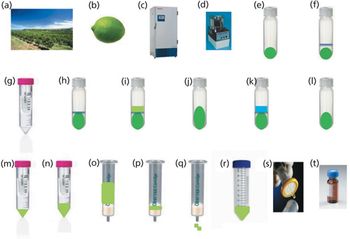
LCGC North America
China has experienced explosive growth over the past decade, and it has been a boon to the analytical instrumentation industry.

LCGC North America
China has experienced explosive growth over the past decade, and it has been a boon to the analytical instrumentation industry.

LCGC North America
This installment describes several commonly used microextraction sample preparation techniques and their applications to forensic toxicology analysis. Solid-phase microextraction (SPME), microextraction by packed sorbent (MEPS) and different types of liquid-based microextraction (LPME), including single-drop microextraction (SDME), hollow-fiber supported LPME, three-phase LPME, and dispersive liquid-liquid microextraction (DLLME), are discussed. Examples of application of these techniques to determine illicit drugs and drugs of abuse from various biological specimens are provided as well.

LCGC North America
The mobile phase pH can be a powerful tool to control retention and selectivity, but it can also get you in trouble if not controlled properly.

LCGC North America
All agencies have issued varying guidances for the approval of recombinant, biosimilars of biopharmaceuticals. However, their impact or meaning is in our understanding and that all submittals are considered on a case-by-case basis.

LCGC North America
Part IV of this series takes a closer look at clustering. Clustering can be very useful at observing your data when the sample dimensionality is large. This is a barbarian term meaning that diversity among your samples may be wide. In that case, the space reduction provided by principal component analysis (PCA) is not always convincing, because the simplification provided by a single two-dimensional plot erases too much information. Clustering allows you to preserve more information.

LCGC North America
In recent years, Huanglongbing (HLB), or citrus greening disease, has devastated citrus crops throughout the world. Penicillin G has been used to treat HLB infected trees with promising results. However, the metabolites produced from the degradation of penicillin G are known to cause potentially life-threatening allergic reactions; therefore, the concentration and presence of the metabolites must be carefully monitored. We have built and revised an analytical method based on Ultra High Performance Liquid Chromatography in combination with Tandem Mass Spectrometry (UHPLC-MS/MS) in order to identify and quantitate penicillin G and its major metabolites, penillic acid and penilloic acid, in citrus fruit and juice. Here, we discuss the chromatographic conditions and revisions that improved the precision and accuracy of our measurements.

LCGC North America
Tips and tricks to help you recognize and solve the most common SPE problems.

LCGC North America
Separation scientists may seek an optimum spot between chromatographic performance required to obtain sufficient results quality, and the time and resources needed to do so. This installment of GC Connections examines the factors that control peak resolution - one of the main drivers of separation quality - and how chromatographers can use this to find an optimum between time, cost, and performance.

LCGC North America
Multidimensional liquid chromatography strategies are the most widely used method for increasing the number of spatially resolved components and reducing stress on mass spectrometric detection. However, the stress placed on a secondary dimension in a comprehensive on-line methodology is very high. An increasingly attractive approach is the coupling of high performance liquid chromatography (HPLC) with ion mobility spectrometry hyphenated to mass spectrometry (IMS-MS). Tim Causon and Stephan Hann of the University of Natural Resources and Life Sciences in Vienna, Austria, spoke to The Column about their work evaluating this approach and exploring its possibilities for metabolomics.

LCGC North America
Keith Bartle talks about his proudest scientific achievements.

LCGC North America
Click the title above to open the LCGC North America January 2017 regular issue, Vol 35 No 1, in an interactive PDF format.